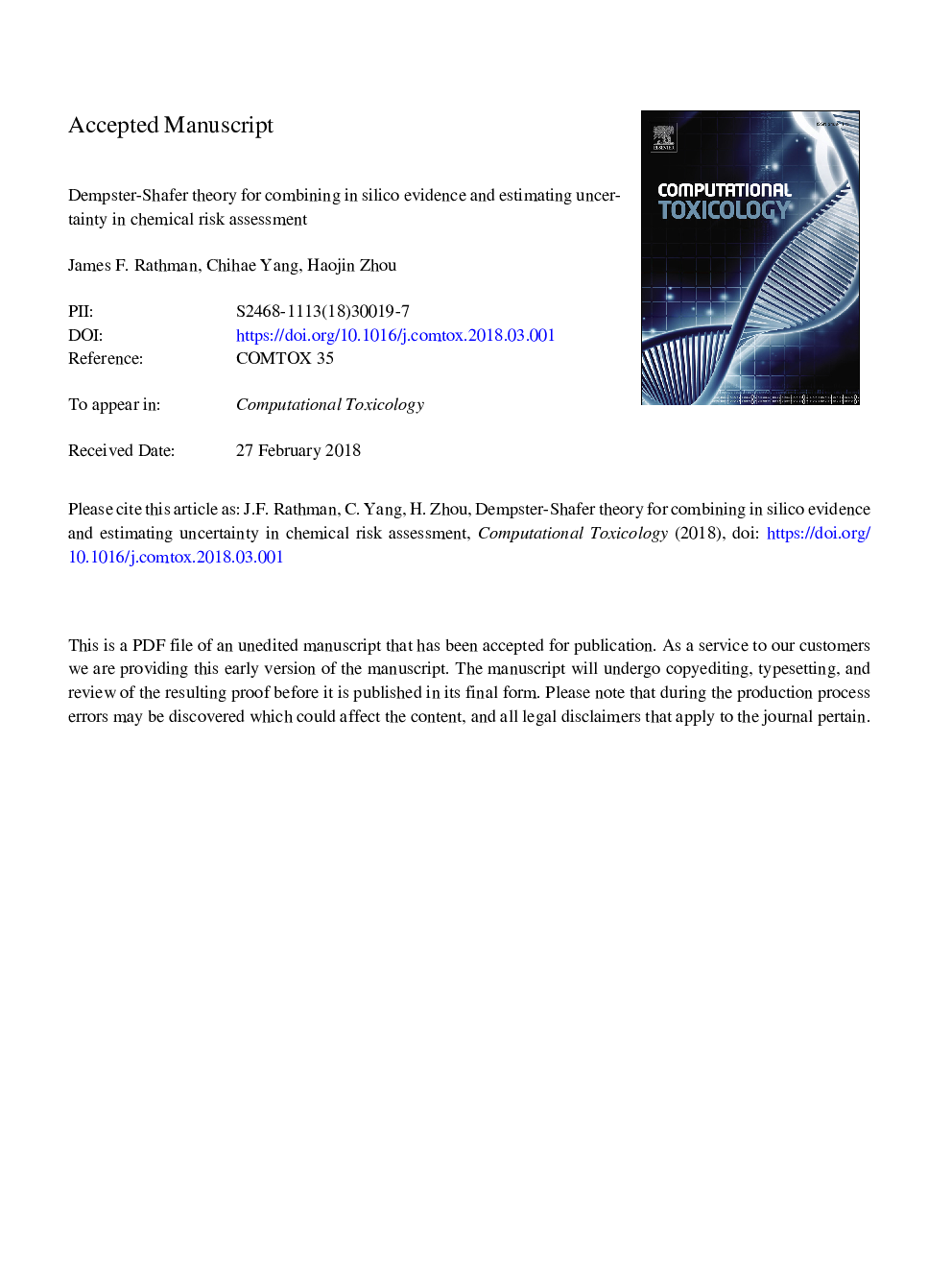| Article ID | Journal | Published Year | Pages | File Type |
|---|---|---|---|---|
| 8376731 | Computational Toxicology | 2018 | 59 Pages |
Abstract
In safety and risk assessment, various sources of evidence can be used to predict whether a given chemical compound may pose a risk for a particular type of toxicity. Evidence may come from computational approaches, such as quantitative structure-activity relationship (QSAR) models, rule-based structural alerts, or experimental data from assays relevant to the toxicity endpoint. Dempster-Shafer theory (DST) is a rigorous decision-theory approach that provides a way to generate predictions, estimate the uncertainty associated with each prediction, and combine multiple sources of evidence to obtain a weight-of-evidence prediction by quantitatively accounting for the reliability of each of the sources being combined. The general approach is presented for different types of classification models with illustrative examples for binary, ordinal, and multinomial classification. Application of the DST approach to model skin sensitization hazard potential based on local lymph node assay (LLNA) experimental data is presented.
Related Topics
Physical Sciences and Engineering
Mathematics
Computational Mathematics
Authors
James F. Rathman, Chihae Yang, Haojin Zhou,
